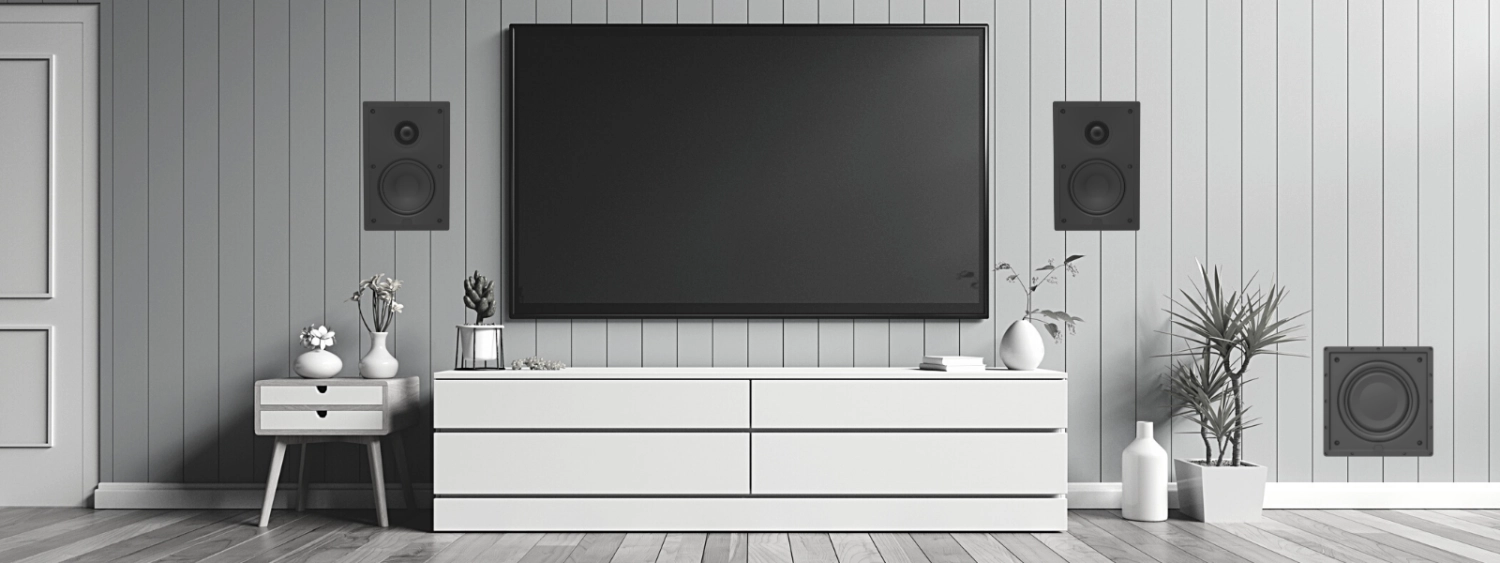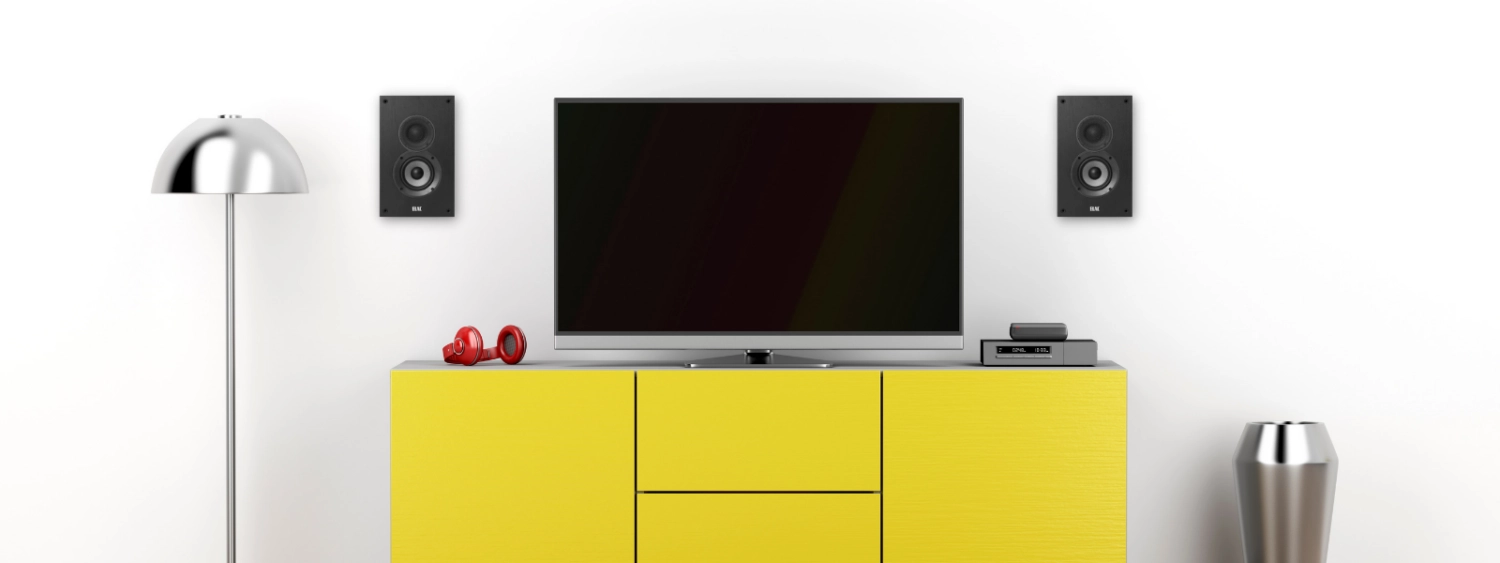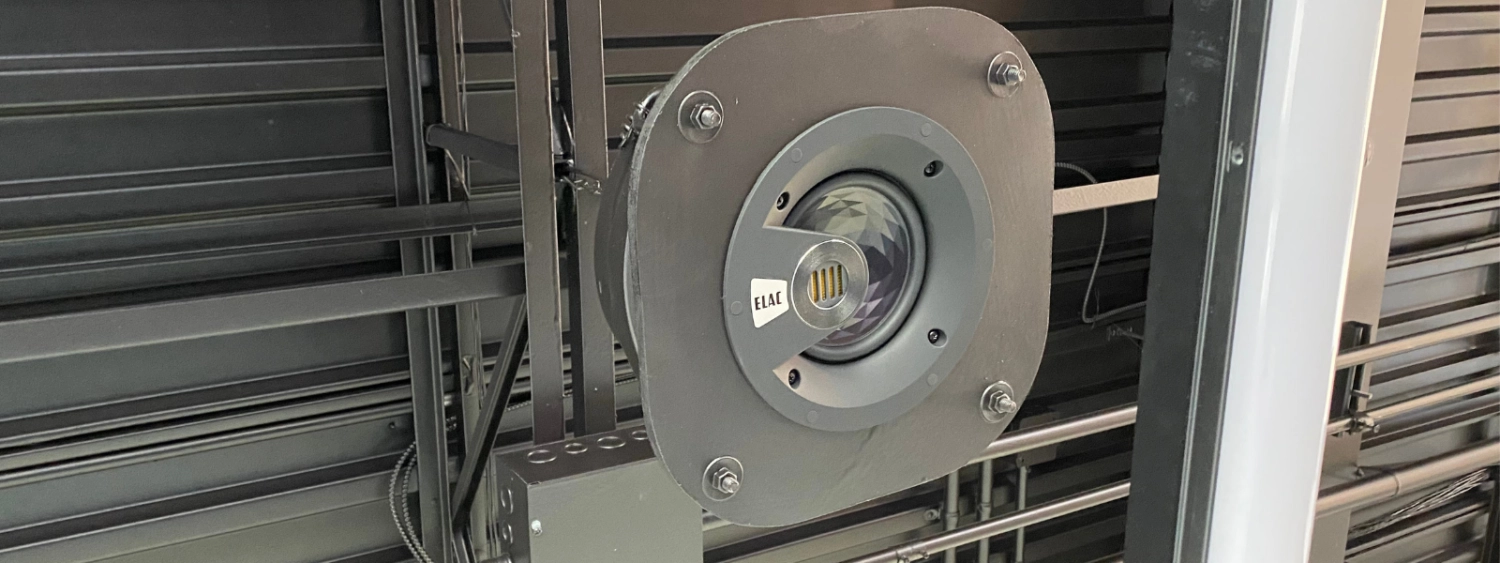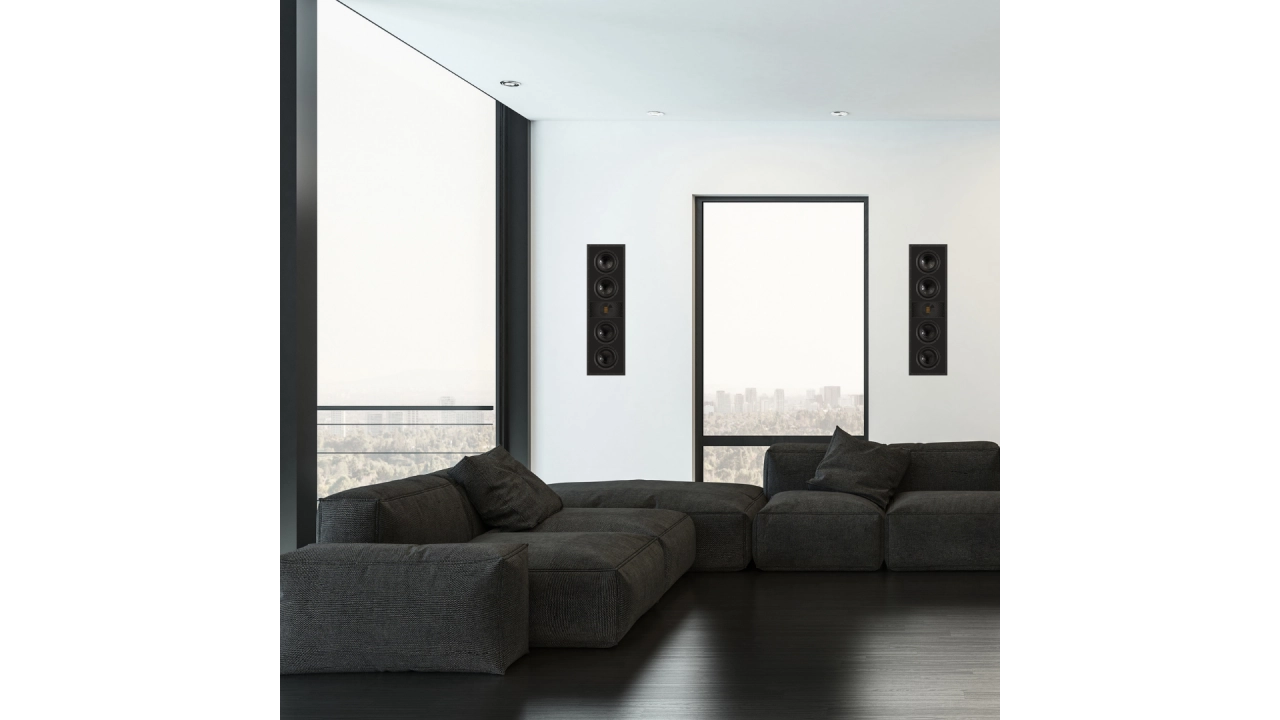How To Choose Between In-Wall, On-Wall, or In-Ceiling Speakers
Built-in speakers have provided complete audio solutions for home and business owners alike in today’s technologically advanced era. With these speakers incorporated in your interior space, you can benefit from a full surround sound using as little space as possible. Additionally, some people want surround sound, but with the speakers hidden from sight. For this purpose, built-in speakers are suitable. This addition also covers the entire spectrum of uncompromising Hi-Fi to discreet background noise.
However, the real question that every audiophile asks is, “Which type of speakers will help me create a perfect sound system for my interior?” There are three kinds of built-in speaker systems that you can choose from – in-wall speakers, on-wall speakers, and in-ceiling speakers. Choosing the right speakers can be challenging, especially if you’re looking for perfection. So, let’s delve into the world of built-in speakers and help you choose the right one for your interior space.

In-Wall Speakers
In-wall speakers are the perfect solution for your Saturday evening music marathon. If you have a room for the sole purpose of dedicated listening, then in-wall speakers are just what you need. They produce high-quality sound, and with the right angle, the quality can be surreal. Often placed at ear-level, in-wall speakers offer an astounding field of sound for the listeners. The best part about in-wall speakers is that you can later add in-ceiling speakers to enhance your home theatre experience.
One of the significant advantages of built-in speakers over traditional cabinet-based speakers is that the reflections are minimized. Usually, a cabinet speaker interacts with floors, adjacent walls, and ceilings, resulting in an uneven base and midrange in sound quality. You can eliminate these reflections by adding an in-wall speaker to create a smoother frequency curve and a better sound experience.
When choosing in-wall speakers, the first step is to select the equipment you want to connect them with. For instance, you can create a discreet cinema in your room with an acoustic transparent screen. This combination will significantly enhance your experience by making it seem like the sound is coming from your surroundings instead of the TV screen.
In-wall speakers also have several commercial applications. From restaurants and spas to waiting rooms, these speakers can blend in with any interior. All it takes is appropriate attention to detail and application of the right engineering procedures. With that, you can attune audio distribution so that the sound can be heard in any space.
On-Wall Speakers
Essentially, on-wall speakers are pretty similar to their in-wall counterparts, with only a couple of minor differences. The most significant advantage of on-wall speakers is that they occupy little space and are, therefore, the perfect choice if you have spatial limitations.
Despite their name, some people do not install on-wall speakers on the walls. Instead, they might place them on a table or other furniture, or even on the floor for freestanding use. While there’s no harm in doing this, you should know that most on-wall speakers perform their best when screwed to the wall.

Depending on critical listening and dispersion, mounting on-wall speakers at ear-level can help you achieve a lifelike soundstage and stereo imaging. What makes these systems stand out is that they add dimensionality along with the stereo effect, which is absent in-ceiling speakers.
Performance-wise, on-wall speakers produce high sound quality like their in-wall counterparts because they are usually angled to create a realistic sound. Therefore, all you need to do to create a home theatre experience is, install one or two speakers of different sizes based on your needs. Then, you can invest further in a proper center channel or subwoofer to create the ultimate sound space.
In-Ceiling Speakers
Although all built-in speakers provide a discreet sound to the listeners, in-ceiling speakers add a different camouflage feel. Hidden from the standard field of view, in-ceiling speakers are the perfect solution for listeners who want suitable background music all the time. In addition, they can be a good option if you don’t want bulky speakers to take up your space.
Listeners often wonder about the ideal number of speakers for a room. For the most part, in-ceiling speakers usually come in pairs. However, suppose you have a larger space. In that case, it’s better that you add four smaller speakers rather than two larger ones (or more) to maintain the consistency of the sound.

One significant advantage of in-ceiling speakers is that they are easier to install than in-wall or on-wall speakers. Additionally, most people prefer in-ceiling speakers because they’re less messy. For instance, if you’re opting for a home theatre, you’ll inevitably have cables running everywhere. So, mounting your speakers inside the ceiling means you will have to worry about a lesser number of cables.
Despite their advantages, some audiophiles believe that the sound quality deteriorates when using in-ceiling speakers because the sound is directed downwards. However, new advancements in technology mean that the sound quality produced by these speakers has improved over the years. Furthermore, they also offer outstanding bass performance due to their enclosed design.
Deciding Between Different Speakers
Now that you know about the basic features of different built-in speakers, you must know some technical details before you head out to shop for them. Here are the factors you need to consider when choosing between the different types of speakers:
- Frequency response
- Drive unit size
- Power handling
- Swiveling tweeters
- Frequency adjustment controls
Need help with this? Talk to an ELAC expert today!
Why is Voice Matching Essential?
Choosing the right speakers for your interior may be essential, but matching the voice quality is equally important. Considering that every speaker brand has tonal qualities that may be unique to it, you must use the same brand of speakers throughout your room to improve the sound quality. Like we mentioned before, maintaining the consistency of sound is crucial, and using the same brand can ensure that.
The Bottom Line
With these subtle differences in mind, you’re ready to look for high-quality speakers. First, however, you must remember that placement is equally essential for creating the perfect surround sound. You can further tweak your speakers’ placement to keep them in line with your interior’s light fixtures for an aesthetic upgrade.
So, which speaker piques your interest? If you are looking for expert advice or top-notch speakers, ELAC is here for you. At ELAC, we offer an extended product range suited to all budgets and demands. Making the right purchasing decisions will allow you to enjoy the full essence of your sound system, so ensure you make informed choices!
Check out our range of in-wall, on-wall, and in-ceiling speakers on our website today.
Make A Sound Decision And Connect With ELAC Right Away!

